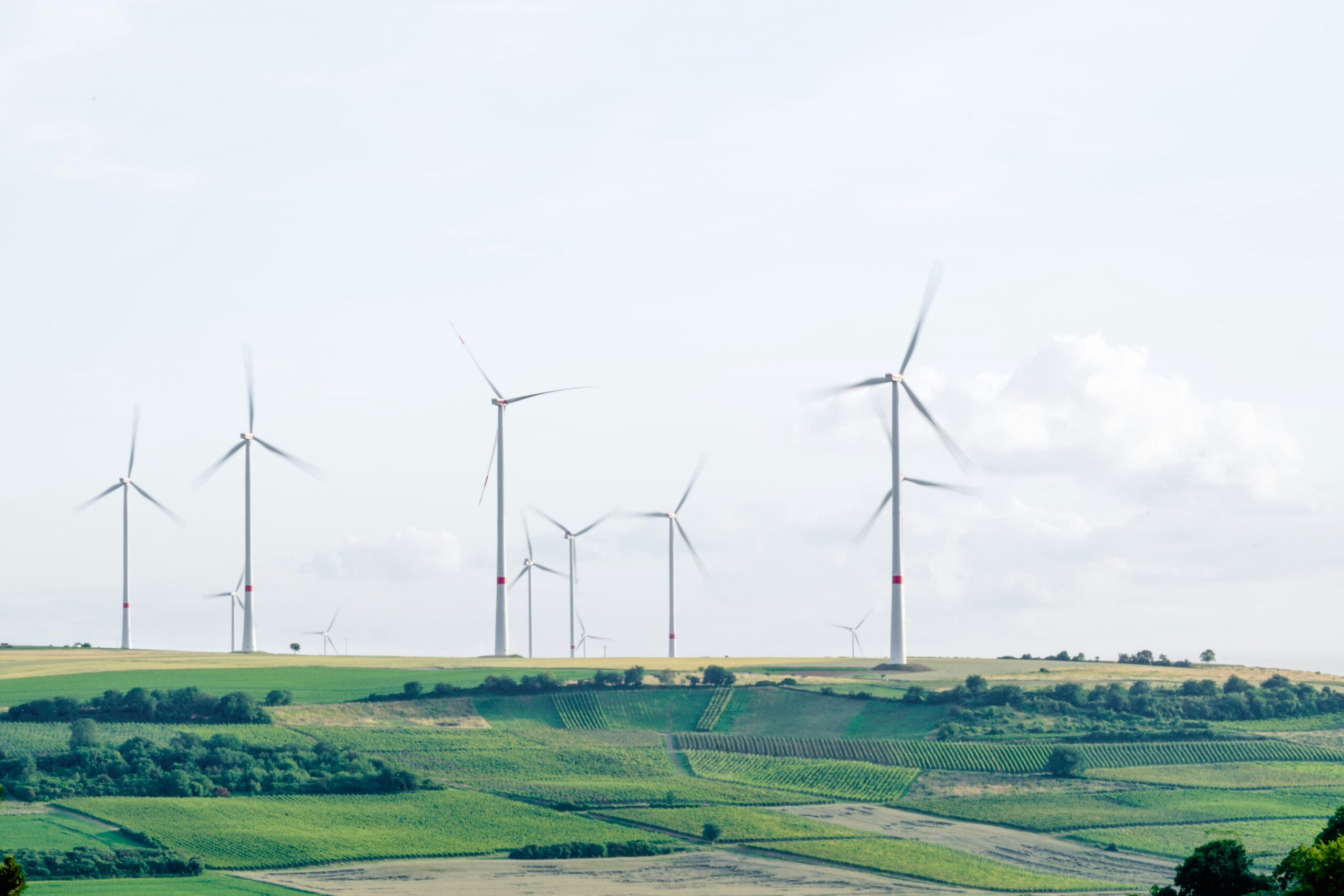No products in the cart.
The Impact of Human Activities on the Environment: A Deep Dive into Development and Industrialization
Introduction to Human Impact on the Environment
The relationship between human activities and the environment is intricate and multifaceted. As societies advance, the inexorable march of urbanization and industrialization has reshaped not only physical landscapes but also ecological systems. The expansion of urban areas has led to significant alterations in land use, often encroaching upon natural habitats, resulting in habitat loss and fragmentation. This change in land utilization can have severe consequences for biodiversity, leading to reductions in species populations and contributing to the decline of some species. Furthermore, as cities grow, the demand for resources increases, intensifying pressures on the environment.
Industrialization, a pivotal force in shaping modern economies, has profoundly influenced environmental conditions. The processes involved in manufacturing and production often entail the extraction and consumption of natural resources at unsustainable rates, which can lead to depletion of essential resources such as water, minerals, and forests. The consequences of such resource extraction extend beyond mere depletion; they also manifest in increased pollution levels, soil degradation, and adverse climate change effects. Factories emit greenhouse gases, contributing to climate change, which poses a significant threat to ecosystems and human health.
The urban-industrial nexus also exacerbates waste generation, with urban areas being unable to cope with the sheer volume of waste produced. This growing problem requires innovative waste management practices to mitigate the negative impacts on the environment, yet many regions struggle to implement effective solutions. The relationship between human endeavor and environmental impact underscores the urgent need for sustainable practices that reconcile development with ecological preservation. As we delve deeper into this topic, it is crucial to recognize the far-reaching consequences of our actions, which must inform future policies and practices aimed at mitigating environmental degradation.
The Role of Industrialization in Environmental Change
Industrialization marks a significant turning point in human history, transitioning societies from agrarian economies, where agriculture was the primary mode of production, to industrial economies characterized by mass manufacturing. This shift began in the late 18th century, primarily in Europe, and has since profoundly influenced environmental conditions globally. One of the paramount consequences of this transition has been the rapid acceleration of environmental change.
The advent of industrialization has led to the establishment of factories that emit substantial amounts of pollutants into the atmosphere. This pollution often contains harmful chemicals and particulates that negatively impact air quality, contributing to health problems among populations and aggravating climate change. Additionally, the use of fossil fuels has dramatically increased carbon emissions, impacting the delicate balance of the Earth’s climate systems. As a result, the consequences include more frequent and severe weather events, shifting ecosystems, and rising sea levels.
Moreover, industrial activities have precipitated a rapid rate of deforestation, as land is cleared for industrial development and urban expansion. Forests, once abundant, are being transformed into industrial sites and urban areas, leading to habitat destruction and loss of biodiversity. This loss has dire consequences for wildlife and disrupts natural processes essential for maintaining ecological balance. Simultaneously, the depletion of natural resources such as water and minerals has become a pressing issue, as industries relentlessly extract materials to sustain production demands, threatening sustainability.
The environmental impact of industrialization raises crucial questions about the long-term viability of current economic models. As societies continue to evolve towards greater industrial activity, understanding these negative consequences becomes essential for developing strategies that mitigate environmental degradation while still supporting economic growth. Only by recognizing and addressing these challenges can we hope to foster a sustainable relationship between human activities and the environment.
Urbanization and Its Environmental Effects
Urbanization is an inevitable consequence of population growth and economic development, leading to significant transformations in the landscape and environment. As urban areas expand, they attract individuals seeking better employment opportunities and improved living conditions. However, this rapid influx of people presents a series of challenges that can have dire environmental consequences. One of the most immediate effects is the increased consumption of resources, such as water, energy, and raw materials, to support the growing population.
As cities expand, the need for infrastructure, housing, and services escalates. This surge in demand often leads to unsustainable practices, where natural resources are exploited at an alarming rate. The drive for development can result in over-extraction of water from aquifers, deforestation for land use, and increased energy consumption, contributing to higher greenhouse gas emissions. Consequently, urbanization is directly linked to adverse environmental changes, including climate change, which further exacerbates existing issues.
Moreover, the waste generation associated with urban living poses significant challenges for cities. Landfills become overcrowded, and pollution levels rise as waste disposal methods often fail to keep pace with the rapid increase in population. This not only affects air and water quality but also leads to detrimental health consequences for urban residents. Habitats are also disrupted, as urban sprawl encroaches on natural ecosystems, leading to habitat loss and a decline in biodiversity. Such environmental consequences necessitate critiques of current urban planning strategies.
To mitigate these negative impacts, there is an increasing need for sustainable development practices that prioritize the environment without compromising economic and social growth. By adopting green building practices, enhancing public transportation, and promoting efficient resource management, cities can navigate the complex challenge of urbanization while minimizing its environmental consequences. Such measures are essential for ensuring a sustainable future for urban populations and the planet.
Pollution: Air, Water, and Soil Dynamics
The environmental consequences of pollution, stemming primarily from industrial and urban activities, manifest in various forms, affecting air, water, and soil quality. Airborne toxins, released during industrial processes, include particulate matter, volatile organic compounds (VOCs), and greenhouse gases. These pollutants can lead to respiratory ailments in humans and disrupt local ecosystems. The rising levels of emissions contribute not only to climate change but also to the degradation of biodiversity as species struggle to adapt to increasingly toxic environments.
Water pollution represents another significant concern, often resulting from the discharge of untreated industrial effluents and agricultural runoff. Industrial wastewater frequently contains harmful chemicals that contaminate rivers, lakes, and groundwater sources. Agricultural practices also contribute to water degradation through fertilizers and pesticides, which can result in nutrient runoff. Such pollutants lead to eutrophication, a process that depletes oxygen levels in water bodies, creating ‘dead zones’ where aquatic life cannot survive. The consequences of water pollution extend to human health, with contaminated water sources posing serious risks of waterborne diseases.
Soil pollution, a frequently overlooked aspect, arises from the accumulation of hazardous substances in the soil, most often due to waste disposal practices and the use of chemical fertilizers. Heavy metals, pesticides, and hydrocarbons can deteriorate soil health, impact agriculture, and reduce food quality. The effects of soil contamination ripple through ecosystems, as they lead to diminished soil fertility and toxic accumulation in plant life, ultimately affecting the food chain and human health. As industries expand and urban areas grow, the consequences of pollution become increasingly pronounced, underscoring the need for sustainable practices to mitigate these adverse impacts on the environment.
Deforestation: Causes and Consequences
Deforestation represents a critical environmental challenge, primarily driven by various human activities, including agriculture, logging, and land development. These activities are often pursued for economic gain, but they bring significant and adverse consequences for the environment. The expansion of agricultural land to meet global food demands is a leading cause of tree loss. As forests are cleared to make way for crops and livestock, a host of ecological repercussions ensue. In addition to agriculture, logging operations contribute notably to deforestation. Wood extraction for construction, products, and fuel leads to a degradation of forest ecosystems, compounding the impacts on wildlife and plant species that depend on these habitats.
The consequences of deforestation extend far beyond the immediate loss of trees. One of the most pressing issues is climate change. Forests act as carbon sinks, absorbing carbon dioxide from the atmosphere. When trees are cut down, not only is this carbon storage capacity diminished, but the carbon stored within the trees is released back into the atmosphere, exacerbating greenhouse gas emissions. Consequently, deforestation is a significant factor in global warming, leading to unpredictable weather patterns and increased frequency of natural disasters.
Furthermore, deforestation leads to the loss of biodiversity. Forest ecosystems are home to a substantial portion of the world’s terrestrial species. The destruction of these habitats results in the extinction of various flora and fauna, diminishing genetic diversity and disrupting ecological balance. The consequences extend to water cycles as well, as deforestation can alter precipitation patterns and reduce water quality, affecting both natural and human systems. The depletion of forests compromises the hydrological cycle, leading to soil erosion, flooding, and diminished water availability for communities. Therefore, addressing deforestation is crucial for ensuring environmental sustainability and mitigating its far-reaching consequences.
Resource Depletion: A Critical Assessment
Resource depletion refers to the exhaustion of natural resources due to extensive extraction and consumption fueled by industrialization and consumerism. As societies have evolved, the demand for fossil fuels, freshwater, and minerals has increased significantly, driven by economic growth and technological advancements. This constant exploitation of resources has resulted in alarming consequences for our environment, threatening ecosystem integrity and human livelihoods.
Fossil fuels, including coal, oil, and natural gas, have formed the backbone of energy production, enabling industrial growth and modernization. However, the relentless extraction of these resources has led to not only their depletion but also to detrimental environmental impacts such as air and water pollution, greenhouse gas emissions, and climate change. The long-term consequences of relying on fossil fuels are severe; if trends remain unchecked, future generations may face significant energy shortages, leading to increased conflict over scarce resources and socioeconomic instability.
Similarly, the over-extraction of freshwater poses a direct threat to human health and biodiversity. Rivers, lakes, and aquifers are being drained faster than they can be replenished, which has severe implications for agricultural production, drinking water availability, and overall ecosystem health. The consequences of water scarcity extend beyond immediate human needs; they can lead to habitat loss and adversely affect wildlife populations, altering the balance of entire ecosystems.
Mineral depletion also presents a considerable challenge. Essential components for technology and infrastructure, such as rare earth elements, are becoming harder to obtain due to intensified mining activities. The consequences of this depletion are profound, possibly stunting technological advancement and leading to economic downturns as industries struggle to secure necessary materials for production.
To mitigate these issues, sustainable resource management practices must be adopted. This includes promoting renewable energy sources, implementing strict regulations on water usage, and recycling minerals. By prioritizing sustainability, societies can reduce resource depletion and safeguard the environmental health for future generations.
Climate Change and Human Activities
The intricate relationship between human activities and climate change has become a critical focus in environmental science. Industrial emissions, primarily from burning fossil fuels, release a significant quantity of greenhouse gases into the atmosphere. These gases, notably carbon dioxide and methane, act as a blanket, trapping heat and leading to an increase in global temperatures. The consequences of this rise in temperature are far-reaching, affecting weather patterns, oceanic systems, and ecosystems worldwide.
Deforestation is another prominent factor contributing to climate change. Trees absorb carbon dioxide, one of the primary greenhouse gases. When forests are cleared for development or agriculture, not only is this carbon storage capacity diminished, but the act of cutting and burning trees also releases stored carbon back into the atmosphere. The consequences of deforestation extend beyond climate implications, as it also leads to loss of biodiversity and disruption of local ecosystems that are essential for maintaining environmental balance.
Additionally, excessive land use for agriculture, urbanization, and industrial development alters the natural landscape, further exacerbating climate-related consequences. The increase in impervious surfaces, such as roads and buildings, reduces the land’s ability to absorb rainwater, leading to flooding and changes in local hydrology. This alteration can result in increased runoff, pollutants entering waterways, and degradation of habitats. Furthermore, altered land use compounds the challenges posed by rising sea levels, threatening coastal regions and resulting in the displacement of communities.
Acknowledging these links between human activities and climate change is crucial for formulating effective international agreements and policies aimed at mitigating these impacts. Collaborative efforts, such as the Paris Agreement, illustrate a global commitment to reduce greenhouse gas emissions and drive sustainable development initiatives. Addressing the consequences of climate change requires a concerted effort to reevaluate human behaviors, promoting practices that are not only environmentally sustainable but also economically viable. In conclusion, understanding the profound impact of human activities on climate change reinforces the urgency for immediate action to protect our planet’s future.
Sustainable Development: Bridging the Gap
Sustainable development encompasses a wide range of principles aimed at harmonizing human activities with the preservation of the environment. At its core, the concept advocates for an integrated approach that seeks to fulfill current needs without compromising the ability of future generations to meet their own. This principle is especially pertinent in the contexts of urban planning, industrial practices, and agricultural methods, where the consequences of unsustainable practices can be dire.
In urban planning, adopting sustainable practices is essential to mitigate the adverse effects of urban sprawl and resource depletion. Innovations such as green building designs, efficient public transportation systems, and smart city initiatives play vital roles in minimizing environmental impact. These strategies not only reduce energy consumption and waste generation but also enhance the quality of life for residents while addressing climate change consequences through improved urban resilience.
Within the industrial sector, the implementation of cleaner production techniques is crucial. Industries must adapt by integrating sustainable practices, including waste reduction, resource efficiency, and the use of renewable energy sources. Such shifts can significantly diminish the negative consequences of industrialization, fostering a more environmentally friendly approach to economic growth. Moreover, companies adopting sustainable practices often see enhanced brand loyalty as consumers increasingly favor environmentally responsible organizations.
In agriculture, sustainable farming practices, such as crop rotation and organic farming, emphasize the importance of maintaining soil health and biodiversity. These methods help in combating the detrimental consequences of conventional agriculture, which often relies heavily on chemical inputs that can degrade ecosystems and harm human health.
Despite the various strategies available, challenges such as financial constraints, policy inconsistencies, and lack of public awareness often impede the successful implementation of sustainable development initiatives. However, fostering collaborative efforts among governments, businesses, and communities is crucial to overcoming these hurdles and achieving a more sustainable future.
Conclusion: The Path Forward
The impact of human activities on the environment has become increasingly evident in recent years, as we witness the profound consequences of development and industrialization. From deforestation and pollution to climate change, the ramifications of our actions are significant and far-reaching. It is imperative that we acknowledge these issues and take collective responsibility for our environment. Recognizing the effects of our industrial practices on natural ecosystems should serve as a powerful motivator for change.
To mitigate the adverse consequences of human activity, a shift towards more sustainable practices is essential. This can begin at the individual level, with each person reflecting on their consumption habits and lifestyle choices. By adopting more environmentally friendly practices, such as reducing waste, conserving energy, and supporting sustainable products, individuals can play a vital role in shaping a greener future. Furthermore, collective action through community initiatives can amplify these efforts, creating a ripple effect that extends to larger societal frameworks.
On a broader scale, policy changes are crucial in addressing these environmental challenges. Governments must prioritize sustainability in their developmental agendas, promoting policies that incentivize green technologies and practices. This could involve stricter regulations on emissions, investment in renewable energy sources, and the protection of biodiversity. The consequences of neglecting these responsibilities will not only affect the environment but will also impact future generations, making it essential to act with urgency.
In conclusion, the path forward requires a commitment to sustainable development, both at the individual and societal levels. By recognizing the consequences of our actions and actively working towards sustainability, we can contribute to the preservation of our planet for years to come. It is our shared duty to ensure that the environment remains viable and thriving for future generations. Each step, no matter how small, can lead to meaningful change.






















![A Comprehensive Review of [Course/Product/Experience Name] 22 man in gray shirt sitting on black chair](https://theamericansidehustle.net/wp-content/uploads/2025/03/man-in-gray-shirt-sitting-on-black-chair-1-scaled.jpg)















































































